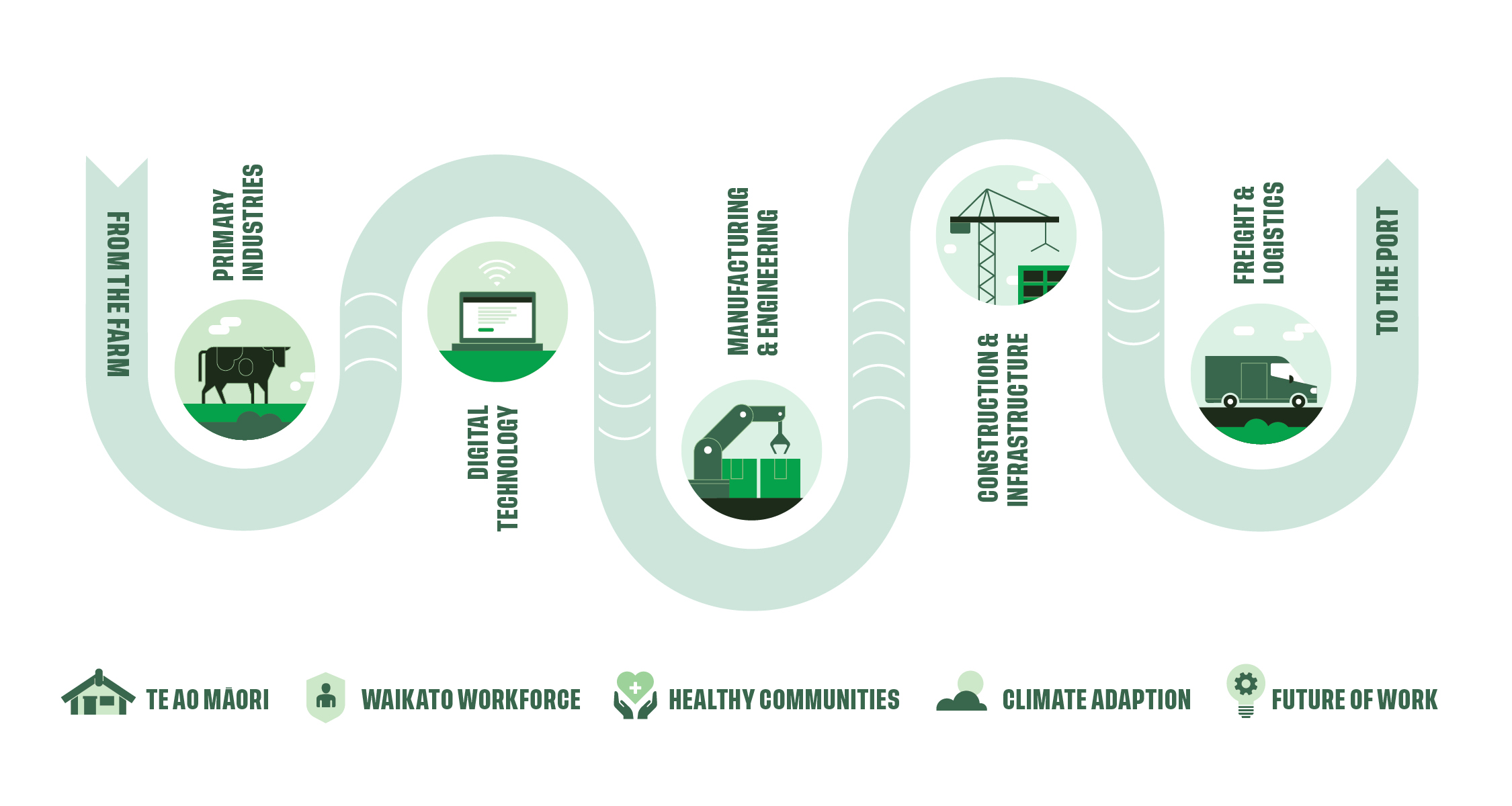Regional aspirations summary
On this page

Text description
Ko Waikato te Awa, he piko he taniwha, he piko he taniwha. Waikato Taniwharau.
The Waikato River is a key life force of the region, as illustrated by the metaphor in the pepeha above, where at every bend there is a Taniwha, a supernatural entity. The Taniwha represents chiefs, which in turn represents people who not only connect through shared whakapapa but who also share their own special relationship with the Waikato River, the country’s longest at 425 kilometres. It flows from Taupo-nui-a-Tia, meanders through to Te Puaha o Waikato, where it eventually flows out into Te Tai-o-Rēhua.
Prior to the impacts of raupatu and the erection of the 9 hydro dams, Māori enjoyed unimpeded travel up and down a healthy and unpolluted river. The river was not only a food basket, but the water was used in ceremony and for healing. Historically the river was a highway and was alive with waka carrying people to various destinations, and like the Golden Triangle, was an expressway of freighted goods. The impacts of raupatu not only saw the loss of a peoples’ economic base through massive land confiscations, it also saw a significant decline in the health of the river caused through increasing pollution. As the health of the river declined, so too did the health of the people living along its banks, who relied on it for food and trade.
Whatungarongaro te tangata, toitū te whenua
Iwi continue to seek cultural redress through Te Tiriti o Waitangi (the Treaty) claims process to reinforce their identity as a Treaty partner. For those who have settled their claims, the road to building upon their capacity and capability as an economic hub continues at pace. From a Te Ao Māori world view, land cannot be owned but rather iwi are Tangata Whenua and kaitiaki, they are people of the land with a caretaker responsibility for future generations. Similarly, success in creating and future proofing a strong economic base for successive generations to benefit from and build upon will ensure their sustainability.
Iwi are kaitiaki of their whenua, and are actively seeking solutions to protect and enhance the environment for future generations.
Water is the life blood of the region, not only is it home to the country’s longest river (from which it takes its name), it is also blessed with 2 coastlines – each providing food and an economic base for several iwi and communities.
Nāu te rourou, nāku te rourou, ka ora ai te iwi
The graphic depicts a road from the farm to the port, along which runs the sectors in focus for this RWP. It is set against a backdrop of partnerships and relationships that are necessary for sustainable growth and productivity. Te Ao Māori is a key component of this ecosystem, and as reflected in the whakatauki, iwi recognise the importance of collaboration and the building of strong and enduring partnerships. Like any good partnership, it is important for the participants to understand each other’s perspective.
The RSLG wants to see more support for employers in understanding a Te Ao Māori world view.

